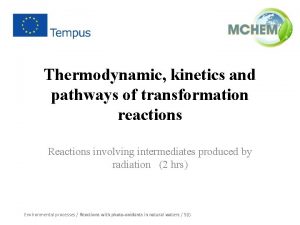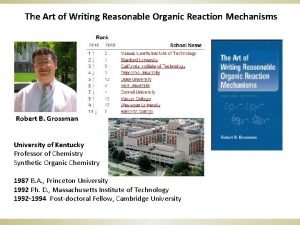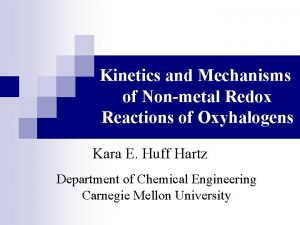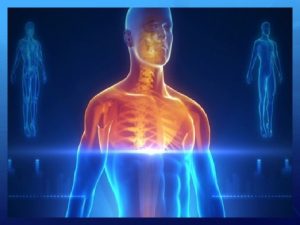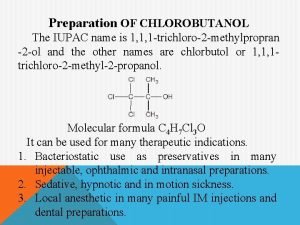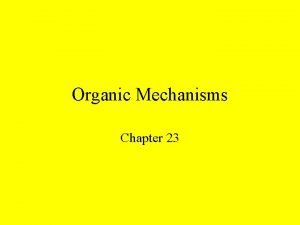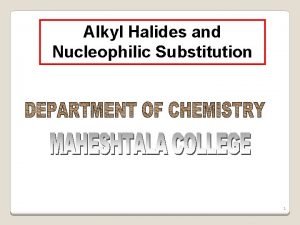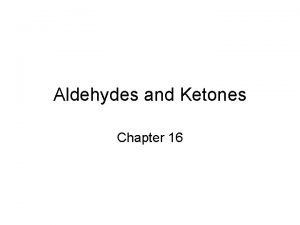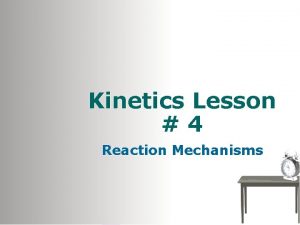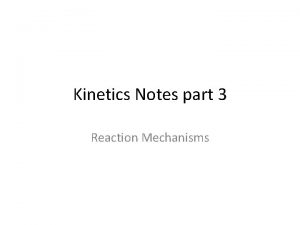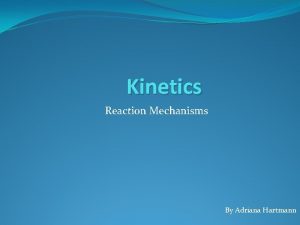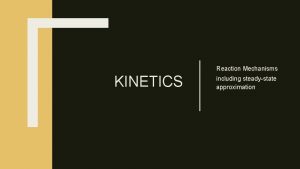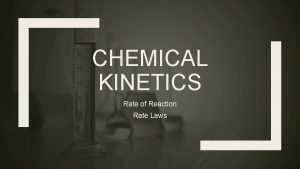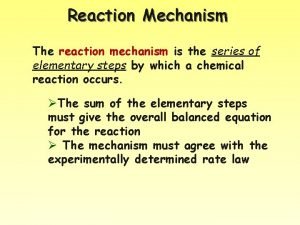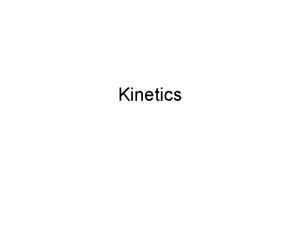KINETICS Mechanisms Rate Laws Reaction Mechanism The series










- Slides: 10

KINETICS Mechanisms

Rate Laws Reaction Mechanism - The series of elementary steps by which a chemical reaction occurs.

Rate Laws To validate (not prove) a mechanism, two conditions must be met: 1. The elementary steps must sum to the overall reaction. 2. The rate law predicted by the mechanism must be consistent with the experimentally observed rate law. Elementary Steps = individual, single steps

Rate Laws Rate Determining Step - the slowest step in the reaction mechanism It therefore determines the rate of the reaction. The experimental rate law must agree with the rate-determining step!

Rate Laws • In most mechanisms, one step occurs slower than the other steps. • The result is that production cannot occur any faster than the slowest step; the step determines the rate of the overall reaction. • We call the slowest step in the mechanism the rate determining step. – The slowest step has the largest activation energy. • The rate law of the rate determining step determines the rate law of the overall reaction.

Identifying the Rate-Determining Step 2 H 2(g) + 2 NO(g) N 2(g) + 2 H 2 O(g) The experimental rate law is: R = k[NO]2[H 2] Which step in the rxn mechanism is the rate-determining step? Step #1 H 2(g) + 2 NO(g) N 2 O(g) + H 2 O(g) Step #2 N 2 O(g) + H 2(g) N 2(g) + H 2 O(g) Step #1 agrees with the experimental rate law

Identifying Intermediates 2 H 2(g) + 2 NO(g) N 2(g) + 2 H 2 O(g) Which species in the rxn mechanism are intermediates – substances that are made during one step of the mechanism and then get used up – they do not show up in the final, balanced equation because they were not an original reactant, or a final product. Step #1 H 2(g) + 2 NO(g) N 2 O(g) + H 2 O(g) Step #2 N 2 O(g) + H 2(g) N 2(g) + H 2 O(g) 2 H 2(g) + 2 NO(g) N 2(g) + 2 H 2 O(g) N 2 O(g) is an intermediate

Another Reaction Mechanism NO 2(g) + CO(g) NO(g) + CO 2(g) 1. NO 2(g) + NO 2(g) NO 3(g) + NO(g) 2. NO 3(g) + CO(g) NO 2(g) + CO 2(g) Rateobs = k[NO 2]2 Rate = k 1[NO 2]2 Slow Rate = k 2[NO 3][CO] Fast The first step is slower than the second step because its activation energy is larger. The first step in this mechanism is the rate determining step. The rate law of the first step is the same as the rate law of the overall reaction.

Mechanism with a Fast Final Step • When a mechanism contains a fast initial step, the rate limiting step may contain intermediates. • When a previous step is rapid and reaches equilibrium, the forward and reverse reaction rates are equal, so the concentrations of reactants and products of the step are related and the product is an intermediate. • Substituting into the rate law of the RDS will produce a rate law in terms of just reactants.

A (not so fun) Game of Substitution! Note: for each elementary step, coeff. = orders k 1 1. 2 NO(g) N 2 O 2(g) Fast 2. H 2(g) + N 2 O 2(g) H 2 O(g) + N 2 O(g) Slow Rate = k 2[H 2][N 2 O 2] 3. H 2(g) + N 2 O(g) H 2 O(g) + N 2(g) Fast k− 1 2 H 2(g) + 2 NO(g) 2 H 2 O(g) + N 2(g) Rateobs = k [H 2][NO]2 Now plug this in anywhere you see [N 2 O 2] in the slow step rate law!

